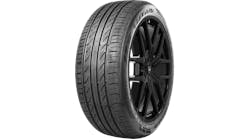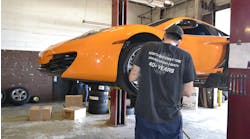The Interlagos circuit, in the heart of Sao Paulo, is the second-shortest lap of the year after Monaco, with a series of twists, turns and elevation changes that provides a fascinating challenge for drivers, cars and of course tires.
The medium and soft compounds have been nominated for Interlagos, but traditionally there is a high risk of rain, and the initial long-range forecasts predict wet weather for at least part of the weekend. The sheer number of corners packed into just 4.309 kilometers means that the tires constantly have work to do, and the relative lack of any long straights does not give them the chance to cool down. Furthermore, the track is well known for being bumpy, with high-speed turns and small run-off areas, demanding maximum concentration from the drivers.
Above all, Interlagos is known for its enthusiastic fans and unique atmosphere. It’s a circuit where many titles have been decided in the past, but with double points on offer for the 2014 finale in Abu Dhabi, that will not be the case this weekend.
Paul Hembery, Pirelli motorsport director:
“Brazil is one of the biggest markets in the world for Pirelli, so it’s a pleasure to be there among our friends and supporters. The lap takes a lot out of the tires due to the almost non-stop succession of corners, a number of which are high-speed. So getting the most out of the tires and the strategy is clearly going to be of vital importance in the race. We’ve seen a number of wet races in the past at Interlagos, which seems to be a strong possibility this year as well. All of this adds to the reputation of the Brazilian Grand Prix for hosting dramatic races where nobody knows what to expect, so it’s likely that we can look forward to another exciting weekend in front of a crowd that is truly passionate about Formula One.”
The circuit from a tire point of view:
Interlagos is one of the few circuits of the year that runs anti-clockwise (together with the Circuit of the Americas and Yas Marina – meaning that the season end consists entirely of anti-clockwise layouts).
The medium tire is a low working range compound, capable of achieving optimal performance even at a wide range of low temperatures. The soft tire by contrast is a high working range compound, suitable for higher temperatures. This has an effect on the race strategy.
Tires are often subjected to combined forces at Interlagos: lateral and longitudinal demands at the same time. This raises the temperature of the compound. Downforce levels are generally high, with aerodynamic and mechanical grip requirements roughly in equal proportion.
The winning strategy last year was a two-stopper. Red Bull’s Sebastian Vettel started on the medium tire, pitted for the medium again on lap 24, then switched to the hard compound on lap 47. Prior to the start of the race there had been no dry running, complicating the strategy calculations.


